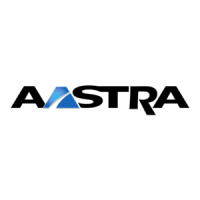Ascotel IntelliGate 2025/2045/2065
626 Planning DECT systems Part 3
• It is important to ensure sufficiently large overlap zones between neighbouring
coverage ranges. The signal should not be too weak that it prevents automatic
handover to the next radio unit. Here, it is necessary to find a solution between
a large number of radio units and a reasonable coverage of the premises.
• Radio range (guideline values)
– up to 30 m in buildings
– outdoors up to 250 m.
• Observe the minimum distance between radio units (see "Installing the radio
units", page 829).
5.4.3 On-site measuring
As soon as the concrete locations for the radio units have been planned, it is rec-
ommended to confirm the circumstances in keeping with the plan using on-site
measurements.
A detailed description on how to use the test equipment can be found in "Meas-
urements", page 656.
Remarks:
• Installation site for the test radio unit: To carry out the measurements do not
place the radio unit on the ground / floor but position it in the location in which
it is to be installed later.
• Measurements must be meticulously carried out (no compromises). The objec-
tive is optimum radio coverage.
• Documentation: It is advisable to keep a test log so results can be reproduced
later. Record the values measured as well as the supply range on the ground
plan, horizontal and vertical.
• The measurements provide a reliable idea of the equipment required and the
locations for the radio units.
• Co-operation with the customer: As soon as you are able to make sufficiently
binding statements about "problem areas", you should involve the customer
for clarification purposes. It is imperative that the customer be informed of any
areas where coverage is not optimum.

